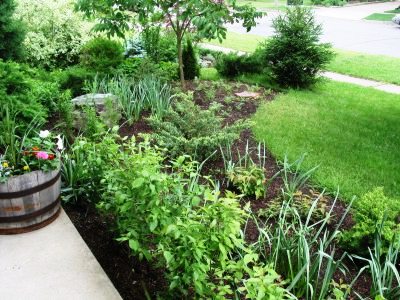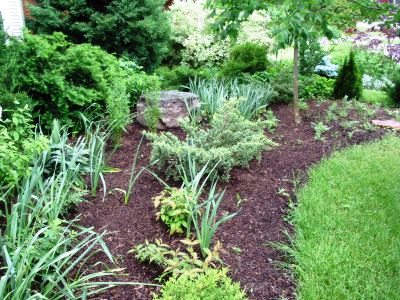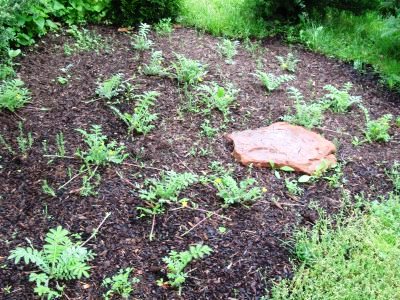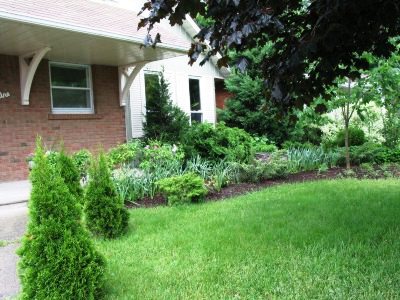 |
|
 |
|
Naturalization of my Property |
|
Front Yard - 2002
|
|
Naturalizing the front yard presented a bit more of a challenge for me
than doing the backyard. The reason is that I live in a tidy (but not
barren) suburban area. Most lawns are neatly trimmed, and the local
"lawnmower derby" runs every week without fail. I don't wish to
be too much of a renegade, nor do I wish to offend anyone. That's just my
way.
So, I wanted to naturalize the front yard, while at the same time keep
it somewhat "inline" with the neighbourhood norms. Last summer
(2001) I obtained a quote for completely naturalizing the front yard,
including the boulevard (the area between the sidewalk and the street),
including plants and labour. I decided that the cost was far beyond what I
was willing to spend. That's when I decided on a "compromise"
plan that I would implement myself.
|
| |

|
Along the edge of the porch I planted a
double row of grey dogwoods. These are in the foreground in this
photo.
There are two half-barrels on the porch, planted with
"domestic" perennials. One of these is visible on the left
edge of this photo.
|
|
| |
 |
Also planted are a native white ash tree and domestic
junipers.
The remains of daffodils are still visible in this picture. They
provide vibrant early spring colour, and disappear in early summer.
A domestic juniper tree and yew (to the left) and some domestic
cedars (in the background) co-exist with some small native shrubs.
|
|
| |
|

|
I dug up all the weeds and mulched the area thoroughly, with the help
of my partner, Julie.
In one area we planted native silverweed, which is shown here
around a flat rock we brought back from Utah last year. We
"traded" a hubcap for it. For the story, see our SW
USA 2001 trip travelogue on this website, Utah
section, Valley of the Gods.
Silverweed spreads quickly, and makes an excellent ground cover. The
roots are also edible.
|
|
| |
 |
An overview of the whole front yard. We
still keep a section of lawn, and may always.
Overhanging the view (upper right corner) is a red Norway maple.
Unfortunately, this is an invasive alien species. It has a tendency to
shade out all other plants underneath it, including grass. However, I
do not wish to remove it as it provides a nice screen between the
house and the sidewalk/road. It would take a number of years for a
replacement tree to grow to a comparable size.
This is a good example of a situation in which one compromises somewhat.
If I knew for sure that I was going to be living here for 10, 20, or
more years, I would cut it down right away and plant a replacement
tree. But if I am only going to be here for 5-10 years, then I want
the shield for the time that I am here.
Yes, compromise is necessary sometimes. But in naturalization
projects it's important to not compromise too much, or
inappropriately.
|
|
| |
|
Previous
Next
|
|
|
|